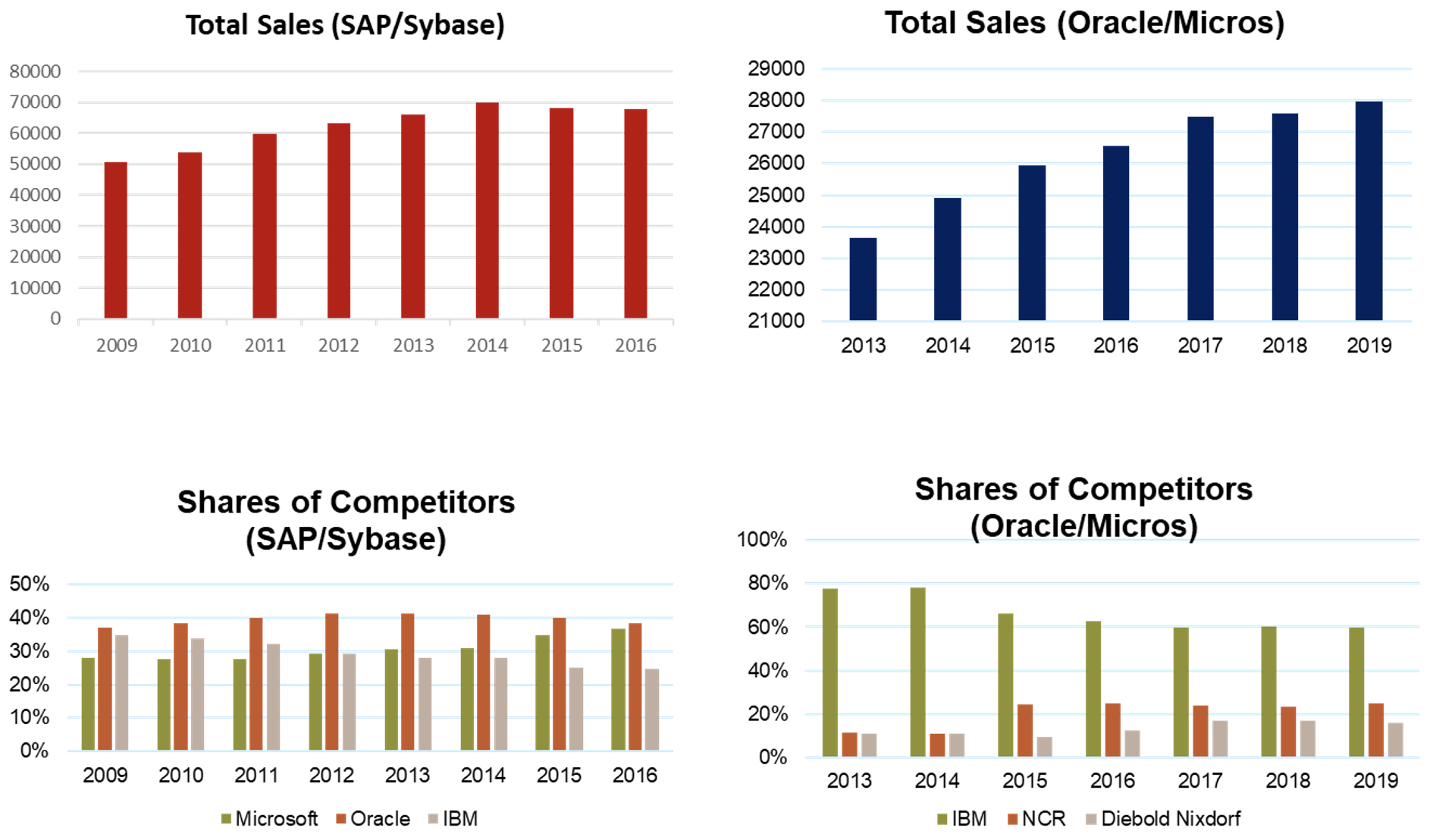Since the inaugural paper by Cunningham et al. (2021), killer acquisitions have occupied centre stage in antitrust policy discussions. The notion describes incumbents purchasing a firm with the sole intention of terminating their operations to pre-empt competition. A legitimate concern is that such transactions might remove organic sources of future competition from markets presently experiencing monopoly power.
The discussion on killer acquisitions revolves around a few key themes. A recurring feature is the issue of incumbents buying start-ups. Such acquisitions may risk consumer harm due to anticompetitive amalgamations of data, increased prices, and reduced entry opportunities (Motta and Peitz 2021). Serial acquisitions of entrants may also dampen incentives to penetrate markets by rendering attractive certain exit strategies for entrepreneurs (Lemley and McCreary 2021), dotting high-tech landscapes with so-called ‘kill zones’ (Kamepalli et al. 2020). More equivocal conclusions are also drawn (e.g. Brutti and Rojas 2022; Crandall and Hazlett 2022). Some contend that classifying an acquisition as ‘killer’ would depend on whether the acquired firm had the incentive and capability to innovate absent the merger (Affeldt and Kesler 2021). Similarly, an acquisition could hardly be labelled anti-competitive if it alleviates financial, technical, and managerial constraints faced by the target (Fumagalli et al. 2020).
The literature on killer acquisitions proceeds on an industry-specific basis. The seminal paper by Cunningham et al. (2021) focuses on pharmaceuticals; Gautier and Lamesch (2021) examine digital markets; and Sokol (2021) develops an analysis of the biotech sector. Although such a compartmentalized approach has received criticism (Yun 2022), it is justified since innovative and competitive dynamics differ dramatically across industries (Lemley 2011). Less nimble markets like pharmaceuticals require a different treatment than digital markets, where non-horizontal considerations such as ecosystem building play a larger role in innovation processes (Sarangee and Echambadi 2014, Klimas and Czakon 2022).
Killer acquisitions remain a rare phenomenon. In pharmaceuticals, where the risk is arguably the highest, the likelihood is between 5.3% and 7.4% (Cunningham et al. 2021). In digital markets, the rate is closer to 1 in 175 (Gautier and Lamesch 2021). The low probability of the phenomenon does not imply minimal intervention, however, as merger control systems are for marginal cases. In this light, 5% to 7% corresponds to the average intervention level in merger cases in the EU (EU Court of Auditors 2020). Accordingly, the killer acquisitions scenario may cause legitimate concern in policymaking, as evidenced by efforts to reform merger law. For example, some jurisdictions have broadened the scope of their merger control system by introducing a ‘transaction value’ threshold, including Austria and Germany (Bryan and Hovenkamp 2020). The OECD has advocated for considering a reversal of the burden of proof for certain mergers (OECD 2020). Recent enforcement efforts like the Competition and Markets Authority’s challenge of Meta/GIPHY, as well as the Federal Trade Commission’s unsuccessful probe of Meta/Within, may demonstrate the need for such reforms. At the same time, there is a real risk of discouraging overall merger activity, which is responsible for increasing research and development expenditure by as much as $13.5 billion annually (Kulick and Card 2023).
In a recent paper (Ivaldi et al. 2023), we contribute to the literature on killer acquisitions by providing a multiple case studies analysis of technology mergers in the EU. We evaluate whether the claim that technology companies acquire rivals to terminate their products to the detriment of competition withstands scrutiny.
Using the European Commission’s case register, we focus on the following high-technology industries: publishing activities (NACE code: J.58), telecommunications (J.61), computer programming, consultancy and related activities (J.62), and information service activities (J.63). We retrieve a total of 387 cases, from which we select transactions in which the acquirer was a large technology firm (Google, Amazon, Meta, Apple, or Microsoft). This further screening yields 14 cases, three of which we eliminate as they are joint ventures, and another three of which we disqualify due to the fact that they were recently decided with no final decisions published. Next, we enrich the dataset by looking at acquisitions made by industry rivals of the big five firms. These rivals are identified by the European Commission in relevant merger decisions. For instance, with regard to Microsoft’s acquisition of Zenimax, the Commission recognised Electronic Arts, Nintendo, Activision, Ubisoft, and Take-Two Interactive as rivals of the merged entity. When we inquire whether any of these rivals made acquisitions, we find that Activision purchased King in 2016. Extending this method to all eight original cases yields four additional transactions. Consequently, we end up with twelve cases to study: Apple/Shazam, Microsoft/LinkedIn, Microsoft/Skype, Facebook/WhatsApp, Google/FitBit, Apple/Beats, Microsoft/Zenimax, Microsoft/GitHub, Activision/King, SAP/Sybase, Oracle/Micros, and Verizon/Yahoo.
In all twelve cases, the Commission decisions mention the targeted firm’s rivals. We retrieve financial disclosure information for these rivals (as well as the merging firms), such as 10-K or 20-F documents. We examine whether the transactions fit the description of killer acquisitions using three tests. The first test concerns post-merger rival perception, which establishes whether the target product is still perceived as a competitor post-acquisition. This is satisfied if there is a reference to the target product as part of the merged entity. We find that in seven cases, the post-transaction world reveals that rivals continue viewing either the target or the acquirer as their competitor. For example, Garmin, a manufacturer of wearables, identified FitBit as one of its principal competitors before 2020. Post-acquisition by Google, Garmin continued to refer to FitBit as a competitor, with Google mentioned in brackets. By contrast, we do not observe a scenario in which rivals that viewed the target as a competitor cease to do so following the transaction. This puts initial doubt into the killer acquisitions hypothesis, which requires deliberate termination of the target’s operations post-merger.
Our second test, the post-merger rival sales test, studies the sales of competitors of the merged entity to assess the post-merger industry landscape. As killer acquisitions concern the pre-emption of future competition, we would expect to observe a decrease in industry output following a suspicious transaction. The test provides a proxy to study whether this is the case. Based on year-on-year segment-level sales data, we find that rivals often expand their output post-merger, with competition for market share amongst rivals intensifying after transactions have been completed (Figure 1). By contrast, industry output decreases after Google/FitBit and Apple/Beats. We argue in favour of discarding the former as an outlier since the main culprit of the decrease in output is Huawei, which has been the subject of US sanctions halving its sales. Indeed, other competitors of Google and FitBit seem to have increased sales post-merger. On the other hand, Apple/Beats stands as a transaction after which industry output ostensibly decreased, and as such may warrant further scrutiny. In any case, the majority of transactions triggered increasing levels of competition in their respective markets.
Figure 1 Examples of post-merger rival sales test in enterprise application software markets
The third and final test asks whether the mergers in question were followed by an external shock likely to denote increased competition. We investigate three types of events. We first look, for each transaction, at all subsequent European Commission decisions concerning the same relevant market, and check whether a widening of the market definition was considered (‘new product introduction’). Next, we ask whether, in subsequent decisions, the Commission has identified a new competitor (‘new firm creation’). Lastly, we check whether an identified competitor has gone through an IPO or an M&A transaction of its own (‘rival transformation’). By answering with a simple yes or no, we try to filter for markets that display rival entry, product innovation, or firm expansion, all incompatible with a killer acquisition (Table 1). We observe that a majority of transactions induced some form of market dynamism after completion.
Table 1 Post-merger competitive events analysis
We show that the idea of killer acquisitions does not hold under all three tests of competitor perception, expansion, and disruption. Given that the killer acquisitions hypothesis claims application in controllable transactions, there is little evidential basis to toughen the law. In most controllable cases, the European Commission correctly anticipated the post-merger evolution in the relevant market with no under-enforcement. Furthermore, arguing for the applicability of the killer acquisitions hypothesis to uncontrollable transactions requires that the competitive effects observed for controllable transactions do not hold under the jurisdictional thresholds of merger law. In other words, we submit that reforming merger law would require proof that transactions involving firms with limited revenue are more susceptible to a ‘kill’ than larger ones. At the moment, the only evidence that exists in support of this argument is intuitive (lower sunk costs of shutting down a smaller project).
The main limitation of our study is the small number of transactions studied. Our work should be read as one more contribution to contemporary trends in the economic literature on the ex-post evaluation of mergers, which studies limited examples by applying the ‘case studies’ methodology (on the assessment of merger decisions, see Duso 2008). In that regard, applying a similar methodology to cases in the UK and the US constitutes avenues for further research.
References
Affeldt, P and R Kesler (2021), “Big Tech Acquisitions – Towards Empirical Evidence”, Journal of Competition Law & Practice 12(6): 471.
Brutti, Z and L Rojas (2022), “M&A and early investment decisions by digital platforms”, Journal of Industrial and Business Economics 49: 509.
Bryan, K A and E Hovenkamp (2020), “Antitrust Limits on Startup Acquisitions”, Review of Industrial Organization 56: 615.
Crandall, R W and T Hazlett (2022), “Antitrust in the Information Economy: Digital Platform Mergers”, Journal of Law and Economics 65(2): 499.
Cunningham, C, F Ederer and S Ma (2021),“Killer Acquisitions”, Journal of Political Economy 129(3): 649-702.
Duso, T (2008), “Assessing Merger Control Decisions: The Role of Competitors”, VoxEU.org, 30 July.
European Court of Auditors (2020), “EU audit report: merger control and antitrust proceedings” Special Report No. 24/2020.
Fumagalli, C, M Motta and E Tarantino (2020), “Shelving or Developing? The Acquisition of Potential Competitors Under Financial Constraints”, CEPR Discussion Paper No. DP15113.
Gautier, A and J Lamesch (2021), “Mergers in the digital economy”, Information Economics and Policy 54: 100890.
Kamepalli, S K, R Rajan and L Zingales (2020), “Kill Zone”, NBER Working Paper No. 27146.
Klimas, P and W Czakon, ‘Gaming innovation ecosystem: actors, roles and co-innovation processes”, Review of Managerial Science 16: 2213.
Kulick, R and A Card (2023), “Mergers, Industries, and Innovation: Evidence from R&D Expenditure and Patent Applications” NERA Economic Consulting Paper.
Lemley, M A (2011), “Industry-Specific Antitrust Policy for Innovation”, Columbia Business Law Review (3): 637.
Lemley, M A and A McCreary (2020), “Exit Strategy”, Boston University Law Review 101(1).
Motta, M and M Peitz (2021), “Big Tech Mergers”, Information Economics and Policy 54: 100868.
Organization for Economic Cooperation and Development (2020), “Start-ups, killer acquisitions and merger control”, Background Note DAF/COMP/2020/5.
Sarangee, K R and R Echambadi (2013), “Firm-Specific Determinants of Product Line Technology Strategies in High Technology Markets”, Strategic Entrepreneurship Journal 8 (2): 149.
Sokol, D (2020), “Merger Law for Biotech and Killer Acquisitions”, Florida Law Review Forum 71(1).
Yun, J M (2022), “Discriminatory Antitrust in the Realm of Potential and Nascent Competition”, George Mason Law & Economics Research Paper No. 22-04.







